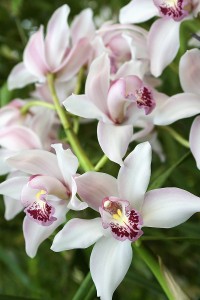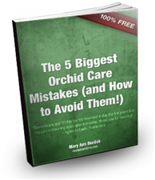 With the advances in technology and lighting today, it’s much easier to grow cymbidium orchids than it used to be. This is because cymbidium orchids need a good amount of sunlight and the proper temperature. They can receive a good amount of lighting (more so than other types of orchids) and love high humidity levels (like most orchids do).
With the advances in technology and lighting today, it’s much easier to grow cymbidium orchids than it used to be. This is because cymbidium orchids need a good amount of sunlight and the proper temperature. They can receive a good amount of lighting (more so than other types of orchids) and love high humidity levels (like most orchids do).
However, one of the trickiest challenges for cymbidium orchid growers is knowing how much water to give to their cymbidium orchids and when to give it to them.
I want to point out a few things.
Most people are determined to give water to their cymbidium orchids in good quantities, and certainly cymbidium orchids need water in order to survive (like virtually all living things). But many people overdo it.
The trick is that you need to keep the medium section of the cymbidium orchids MOIST, but NOT SOGGY. If you water the medium of the plants too much, you could cause your orchids to die.
To figure out if you are giving too much water, not enough water, or just the right amount of water, take your finger and place it about an inch or so into the soil medium. This will help you determine whether the medium is moist or not.
If you think it is, you don’t have to give it any more water; however, if you think that it needs more water, then by all means, give it some more to make it moist.
Another mistake that many cymbidium orchid growers make is that they think that should fertilize their orchids while they are blooming.
Fertilizers can discourage your orchid’s ability to flower correctly if you are not extremely careful.
In fact, the author suggests that you only use a 20-20-20 mixture of nitrogen, phosphorus, and potassium, and only when your plant calls for it. That is definitely good advice, as any other type of fertilizer combination could severely damage or even kill your plant.
Additionally, the author gives good advice when it is mentioned that you should wait another year before giving out more fertilizer – orchids do not need much fertilizer; watering them properly on a regular basis is more vital to their surviving and thriving than fertilizing them regularly.
Cymbidium orchid growers or those who want to grow them, what has worked for you? Any tricks you’d like to add? Please submit a comment below.
For more information about cymbidiums, please see our popular article, “10 Essentials for Growing Cymbidiums“.




I am trying to grow a cybidium for the first time. It is a green one and has just finished flowering. I would love to be able to get it to flower again, and above all prevent it dying. It is in me bedroom, on my desk in light, but not direct sunlight. I do not put the central heating on in my room so it will never be too warm in winter! How much water do I give it because I have been told too much will kill it?
Cymbidiums are tricky. You just want to make sure the medium is moist. To figure out if you are giving too much water, not enough water, or just the right amount of water, take your finger and place it about an inch or so into the soil medium. This will help you determine whether the medium is moist or not.
If you think it is, you don’t have to give it any more water; however, if you think that it needs more water, then by all means, give it some more to make it moist.
Sometimes it’s a little bit of trial and error with your conditions to figure out exactly how much water is the right amount. But just go with the moist test to get a feel for it.
– Mary Ann
I water my cymbidium in a bucket of room temperatured water for one hour. Is that ok?
Flower spike is 6cms now. Should I withhold feed?
After flowering, I intend to repot as it’s starting to mishap the rim. I should have done this maybe years ago. Never repotted this type of orchid before!
Peter – is what you are doing working? It sounds like it is. If something works, keep doing it. 🙂 You can switch to a high-phosphorus, blossom-booster fertilizer. Good luck! – Mary Ann